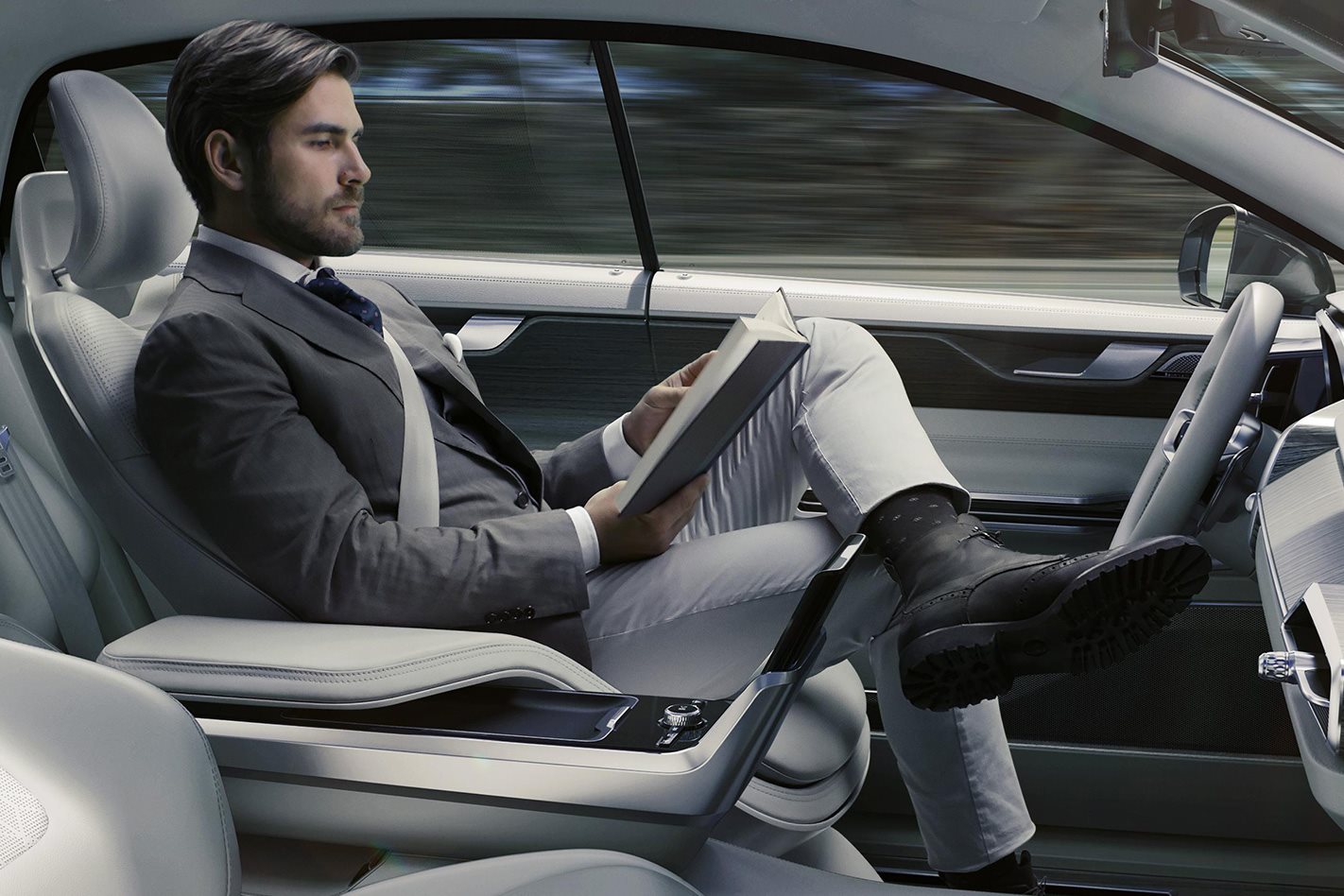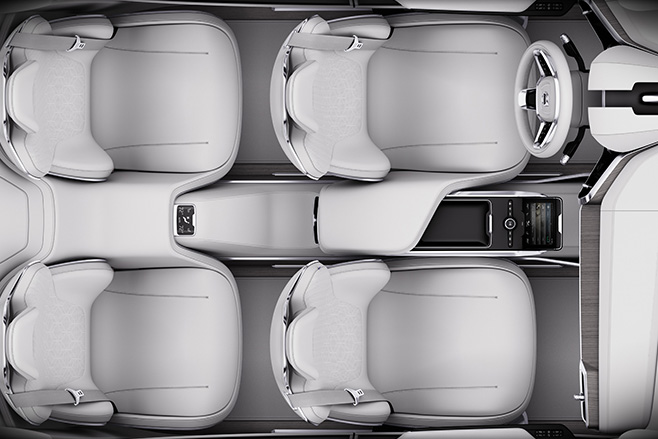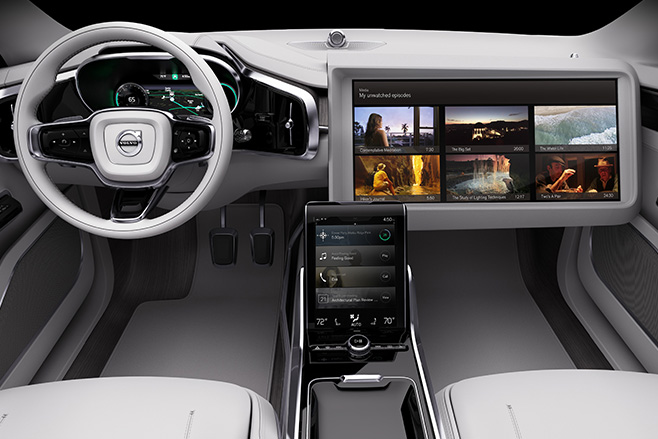
If the Volvo 26 was an Australian concept car, it would be called the Volvo 1-Hour. Drivers apparently lose an average of 26 minutes to their daily work commute, and the time-saving, sanity–saving Volvo 26 autonomous concept promises to give that precious half-hour (or more!) back.
While most drivers would spend the time unproductively (and illegally) flicking through their Facebook feed, it’s still 26 minutes spent on things other than driving, or more likely, getting frustrated in gridlock. This is one of the key attractions of autonomous cars, along with incentives such as a safer vehicle that can converse with other vehicles to protect its occupants and streamline travel, react faster to hazards, save fuel through foresight, and even reduce or get rid of insurance premiums altogether as we head towards a no-bingle future.
In reality, we are far from this full-autonomy idyll. For starters, people have to be comfortable handing control of their vehicle over to a computer program, and let the car carry their loved ones, hands-free. The idea of handing over control with literally no controls in the car freaks even the techies out. But Volvo Car Australia says it will happen, regardless of our many misgivings.

“In 1969, Volvo invented the three-point safety belt – and people scoffed,” points out Volvo’s Director of Corporate and PR, Greg Bosnich. “Today, it has saved over a million lives. Trust [in autonomous cars] will need time and education, and while the tech is already here, full autonomy will need to surpass some ethical and moral issues, and government laws, rules and regulations…
“That said, I drive an XC90 which can steer, stop, go and brake at speeds of up to 50km/h by itself. Sure, it needs guides such as the white lines on the road, but it does it all with minimal input from me. It does take some getting used to, but it’s like the first time you use Cruise Control – your foot probably hovered over the brake until you learned to trust the technology.”
This is where the Volvo 26 bases its beginnings – while the concept is a futuristic look into autonomous vehicles and how people will comfortably travel inside them, Volvo acknowledges that people need a steering wheel and pedals, even if the car does not. So the Volvo 26 has three interchangeable ‘seating’ configurations, with the first offering full control by the driver with a conventional wheel and pedal position. The two next steps are where the concept gets truly interesting.

Before we go further, it’s important to note that the Volvo 26 is not a car; it’s a design study. Volvo already has autonomous cars on the boil: its Drive-Me XC90 project will see 100 self-driving cars on its Swedish home town of Goteborg’s roads by 2017. The Volvo 26 is all about how the interior will work to make the most of a completely autonomous driving scenario, so it’s just that – a cabin.
Without wheels, doors or a roof to distract the eye, the standalone cabin, which was unveiled last month at the LA Auto Show, clearly morphs from a car that is purely driven by human hands and feet, to a recliner, to a sleeper cabin. These three selectable modes—Drive, Create, and Relax— are like a seat memory switches on steroids.
“Drive” is self-explanatory. But if the car detects no hazards and the route has been plotted and accepted on the GPS, the driver can pull and hold both steering wheel paddles to engage the first autopilot mode, “Create”.
The driver’s seat slides back and away from the pedals and wheel, leaving room for a broadsheet newspaper to be spread and read. A tray table also pops out on the left of the driver (the concept is a left-hand-drive car), while the passenger’s side dash flips up and out to reveal a 25-inch multimedia flat screen. The centre console controls slide back with the seat, so the driver still has them at their fingertips to operate various functions, or to select Drive mode again for the final handover of control, “Relax” mode.

Here, the distractions of driving, multimedia, and everything else are taken away. The seat reclines all the way back for a full flatbed experience, complete with a footrest which flips out from under the seat, limo-style. The big display flips back in, doing away with TV and multimedia distraction, and the steering wheel sucks right back into the dash for maximum room.
Back to that inherent human instinct of holding on and never letting go of control; with the seat moved back away from the wheel, or the driver flat back and snoozing, what if something goes wrong? Where are Volvo’s impeccable safety standards in this scenario?
Apparently, an autonomous Volvo will be smart enough to pull over should something go awry, and move the driver back into the “Drive” position – and control of the car.
“Our vision is to not have one person seriously injured or killed in one of our vehicles by 2020,” states Bosnich.
“There will be fail safes for unforeseen circumstances on the road, but a vehicle we are in control of will do its job.”
And with the Volvo 26 concept built on Volvo’s latest interchangeable SPA platform which underpins the next XC90, and the interior clearly modelled on the XC90, perhaps it isn’t all that futuristic a concept. How long will it be before elements of this concept filter in to practical motoring? That really depends on the level of trust we drivers are willing to put into technology that is, quite literally, out of our hands.



